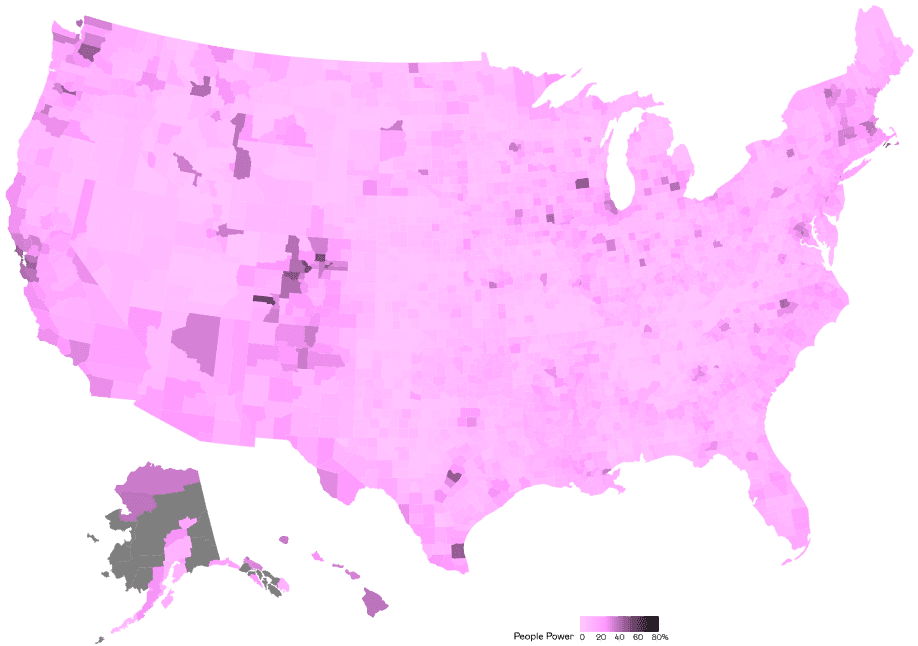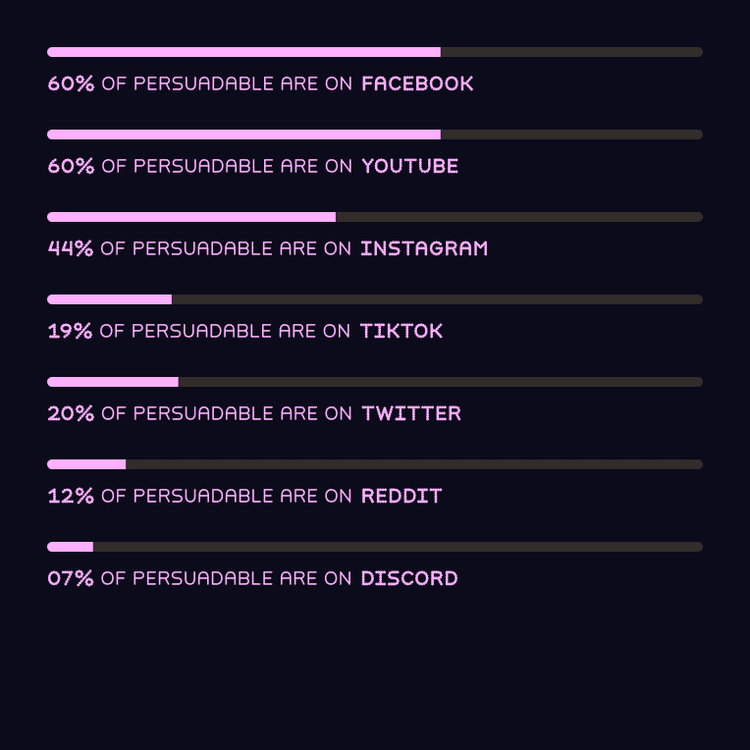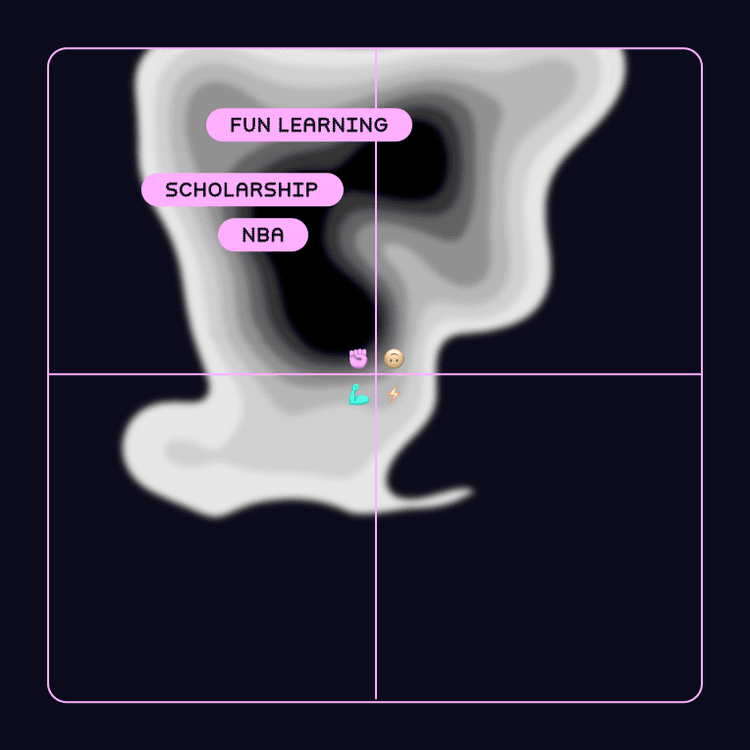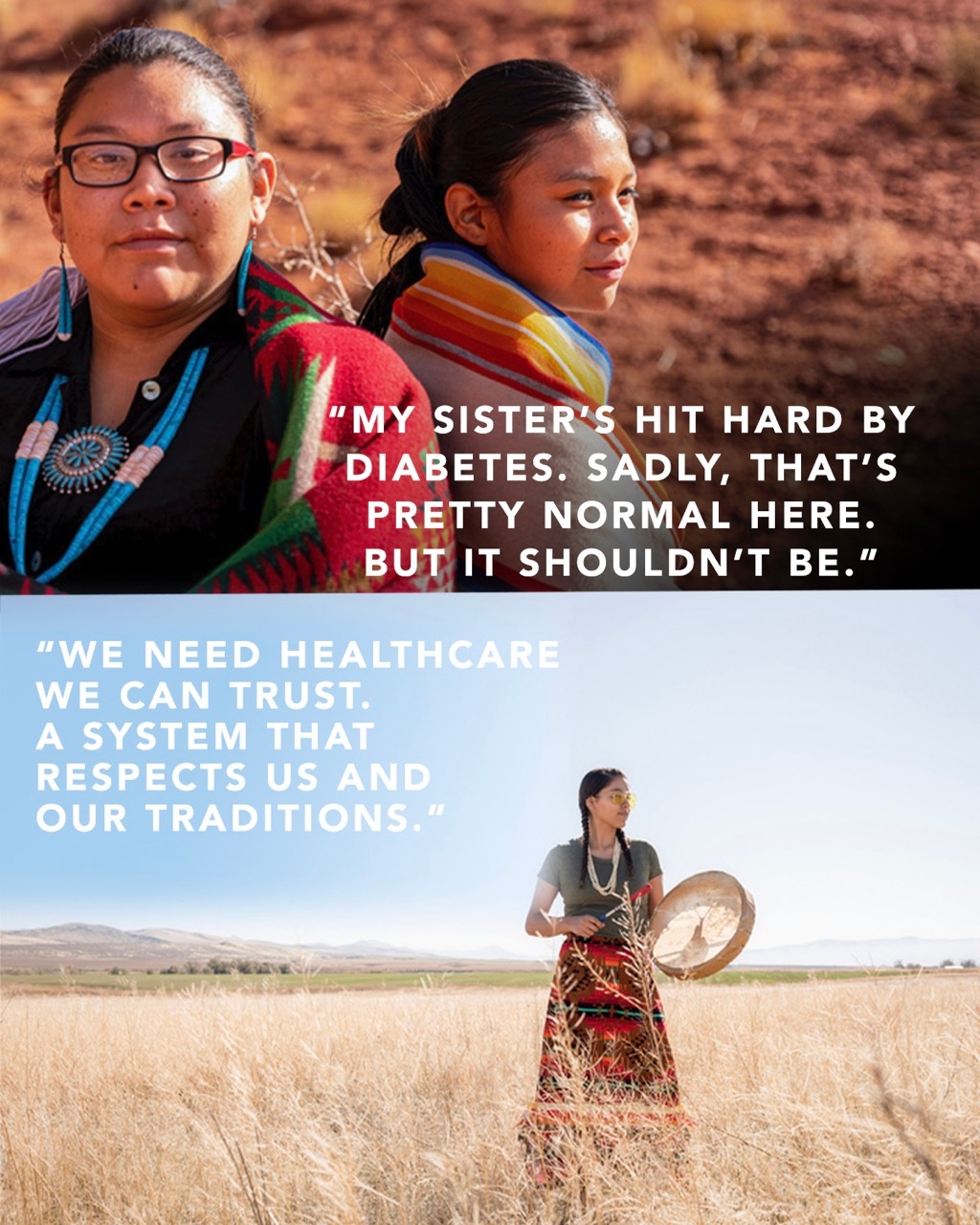The Narrative Observatory
People are steeped in stories. They’re constantly moving through media, giving rise to a terrain of deeply held narratives about how the world works, what matters, and what’s possible.
Understanding how to navigate this terrain—and find, reach, and resonate with the right audiences in today’s media minefield—is the work of the Narrative Observatory.
With data infrastructure purpose-built to deliver audience-based insights, narrative and network analysis, and empirical validation of cultural strategy and content, we help strategists and creative practitioners identify story opportunities and challenges across a range of social issues.
Table of Contents
There is no narrative without audience
At the heart of the Narrative Observatory are opt-in audience panel data which give us a window into the media behavior of 300,000+ people in the U.S. across broadcast television, streaming, desktop, mobile, and tablet. We connect these to media content data, including television closed captions, online news text, social media posts, videos and transcripts from YouTube and TikTok, metadata, and more. By engineering these two kinds of data into one platform, we gain a minute-by-minute view into how people (actual people, not bots, hashtags, or inauthentic actors!) move through media content, across sites and devices.
In the past year, the narrative observatory ingested over 850,000 online news articles read by audiences, 20,000,000 hours of TV viewed, 340,000 hours of YouTube videos watched, and more
By centering people in our research, we can understand how they encounter an issue, narrative, or type of content in their media and cultural intake. And we can understand vulnerabilities, opportunities, and risks, and form hypotheses for narrative intervention. So, by the time you’re ready to produce content, you know what audiences you should be speaking to, how, and where.
The 4 audiences and their core values
Audiences help storytellers imagine how to reach people different from themselves, while making more manageable a reality where every human being is unique. Our 4 audiences hold distinct attitudes, distinct cultural affinities, and participate in distinct media cultures.
Each audience centers a values cluster that drives how audience members reason about themselves and the world. These values clusters derive from Shalom Schwartz’s theory of basic human values. You can think of values as basic psychological goals that inform how people engage with social issues.
The social issues we’ve worked on with these audiences include economic mobility, immigration, racial justice, artificial intelligence, denuclearization, firearm injury, health equity, and more.
One useful feature of this architecture is that it creates a map where proximity matters. People Power and Tough Cookies share values that center collectivity, for instance, whereas If You Say So and Don’t Tread on Me trend toward individual autonomy.
Which audiences do you want to reach?
Our audiences contain more than just values. We can understand how, for instance, age, education, and more intersect.
Values-based audience segmentation is an alternative to segmentation by demographics or political support, with important advantages for narrative and cultural strategy.
We can look at how these 4 audiences distribute in the U.S. by zip code.

More intense color indicates more density in the most prevalent audience per zip code.
A narrative is a story pattern that emerges, as audiences create, consume, and share stories.
The work of narrative change happens at the level of audience and story—varying the what, how, where, and to whom of the stories we tell. But we need to know the narrative landscape each audience inhabits in order to anticipate how the stories we tell will land with them.
To our audience panel data, we join terabytes of content data: TV transcripts, online news articles, song lyrics, YouTube video transcripts, etc. This allows us to look across media types for patterns in the actual stories people are choosing to consume, and identify and measure narratives that inform their understanding of issues.
We put thousands of stories in front of actual audiences to understand the narratives they see.
Our narrative identification process uses human annotators to interact with stories and tell us what narratives they perceive. We select our annotators to represent our four audiences, which means they are diverse with respect to values, race, age, geography, and other key dimensions. And this means that variations in how our annotators interpret stories, across audiences, can tell us something important about differences in each audience’s narrative landscape.
We’re not concerned with personal, private narratives, but with narratives that are sufficiently sticky, persistent, and rooted in culture to show up across, say, online news, entertainment television, and music. The ways people respond to stories—emotions, clicks, call outs—cause narratives to reproduce, spread, and change.
4 Audiences ~ 4 Narratives
For our narrative project on health equity with Robert Wood Johnson Foundation, we collected more than 10,000 media annotations, which we used to discover the distinctive narrative within each audience. You can preview those audience-specific narratives here or explore them in detail in the full project report.
Everyone needs to play their part to keep healthy—physically and mentally—mostly by following the advice of medical experts
Narratives by Media Type
For our narrative project with Bill & Melinda Gates Foundation on poverty and economic mobility, we identified how eight different narratives showed up across different media formats over time. You can learn more about these narratives in the full report.
The first step for an intervention strategy is a narrative goal to guide and inspire the stories we tell.
Before we start experimenting with developing new stories that actually move audiences in the right direction, we need a target narrative against which we can measure our success in moving or transporting audiences. The example below is a target narrative we developed in collaboration with partners and advisors for our project on health equity.
Target narrative
“A new system is needed to replace our current, racially biased healthcare system: one that is accessible and affordable to all, delivers excellent health outcomes across all populations, recognizes and rectifies past and current injustices, and honors everyone who participates in it.”
With a target narrative established, we generate hypotheses about the stories most likely to move audiences.
Together with project partners, we use a few different methods for generating hypotheses about the stories that might evolve each audience’s narrative landscape. We look at an audience’s existing media diet for content that might already be moving them toward a target narrative or holding them back. In parallel, we collaborate with subject matter experts and professional creative strategists to interpret research and identify new storytelling approaches, with a particular eye towards designing for specific audiences by and with those audiences.
From liberatory narrative hypotheses to content
For our narrative project with Robert Wood Johnson Foundation, we convened eight experts in health equity, anti-racism, and narrative change who collaboratively generated 13 different liberatory hypotheses. These hypotheses were embodied in short stories. Here are a few examples and the corresponding ads that were produced for testing.

Women of color are rewarded for downplaying physical and psychological pain and discomfort while trying to prove themselves and please their employers. The desire to provide financial support to her extended family can add even more pressure, resulting in adverse health and stress physiology.
Over the course of an iterative testing process, hypotheses like these are translated into testing content. Having many different hypotheses represented in the testing content allows us to learn more quickly what works and what doesn’t.
At this stage, the content is generally static ads: one or two images with text overlay, presented with additional social media-type headlines, text blurbs, and/or “Learn More” buttons. This gives us what we need to test how audiences respond, and whether it moves them toward a desired narrative target.
Read more about the results of this testing here
What does it mean for a story to “work?”
When we test content to see how audiences respond, we care about engagement and transportation.
Engagement is whether audiences view, click on, or share the content, when it appears inside a social media feed. Transportation is the extent to which content transports or moves audiences toward a target narrative. We test this using randomized controlled trials via a custom-built survey platform.
Both engagement and transportation matter. If content doesn’t engage, it just won’t register with audiences. And if it registers, but does not move audiences toward a target narrative—or moves them away from it!—we have not been successful.
Our model of narrative change starts with audience and ends with stories that can shape the future.
Not every creative concept will move the audience, but testing many different approaches and having a strong target narrative to measure success against allows us to understand how content is contributing to our goal or gives us clues about additional refinements. We can use this process to develop long-term strategies for the types of new stories that are most likely to resonate with and transport audiences.
The final product of this work often takes the form of data-driven content briefs with recommendations about the stories, story beats, endings, characters, worlds, tones, and/or aesthetics that are likely to bring about some evolution in reality. These briefs are living documents, continually updated alongside the ongoing testing of new storytelling approaches.
Case study: #DenuclearizationContent briefs for rewriting the story on nukes
These audience-specific content briefs were developed as part of a narrative project with the Nuclear Threat Initiative to identify opportunities to update the nuclear story in popular media. Learn more about that project here.
- People Power Media
Nuclear Weapons in Media
Current places in media where audiences are receiving stories about nuclear weapons.

Nuclear Weapons by Platform
Primary social media platforms of audiences who are persuadable toward a future of denuclearization.

Intervention Opportunities
Opportunities in familiar media to stage narrative interventions for each audience.
- Mostly young online personalities or comedians (often men) teaching or reviewing a subject directly to the camera. This audience already self-educates, but needs future-looking solutions to start organizing.
Content & Narrative Recommendations
Specific recommendations for content intervention attributes like tone, color, format, etc.
Researching and reshaping our relationship
with media
In partnership with advocacy organizations, philanthropic foundations, entertainment and news media brands, and creators, the Narrative Observatory has helped shape the cultural strategy and media making of dozens of partners to-date. You can explore some of this work below:
How to Reach New Climate Audiences
- Partner: Earth Alliance
- Climate
- Interactive
- Audience
A Home for Every Hero
- Funding: Pop Culture Collaborative Partner: Gutsy Media
- Fandom
- Interactive
- Gaming
- Narrative
- Audience
Audiences for Poverty Narratives in the U.S. Media
- Funder: Bill & Melinda Gates Foundation
- Economic Mobility
- Audience
- Narrative
Health Equity Narratives: Strategy Validation
- Funding: Robert Wood Johnson Foundation Partner: Story Strategy Group
- Health Equity
- Interactive
- Content Testing
A Day In the Life: Poverty & Economic Narratives In the Feed
- Funder: Bill & Melinda Gates Foundation
- Economic Mobility
- Interactive
- Narrative
Poverty Narratives: Trends Over Time
- Funder: Bill & Melinda Gates Foundation
- Economic Mobility
- Interactive
- Narrative
If you’re interested in learning more about the Narrative Observatory and how it might be leveraged for your work, get in touch.
Solving some of the technical, definitional, and practical challenges bedeviling narrative and cultural strategy
The Narrative Observatory provides narrative and cultural strategists tools, like this website, along with industry-grade data infrastructure to understand audiences relative to their place in culture; to identify, measure, and track narratives within audiences over long time scales; and to surface audience-specific story opportunities and threats.
With initial funding from Bill & Melinda Gates Foundation, and most recently Robert Wood Johnson Foundation, the Narrative Observatory has become a widely used tool for cultural strategists and storytellers working to shift the cultural narratives that condition public understanding and constrain institutional action on issues like poverty and economic mobility, health equity, racial justice, immigration, or more.
Methodology FAQ
All the media data in the Narrative Observatory come from commercial partners who donate their data to this work. This community of data philanthropists includes big companies, like Nielsen and Comscore, and also smaller startups, like Peakmetrics, that are scraping different corners of the web, news, television, radio, and other kinds of media. We are grateful to them for supporting the Narrative Observatory.
To create our audience classification, we conduct a voter-file matched survey that explores attitudes on race, gender, place, and class, along with core values. Using these results, we create four audiences and generate an 8-question audience classifier. We rely on demographic details from these surveys (e.g., age, gender, race, zip code) to create predictive models and project these audiences onto nationally representative, opt-in media consumption panels. These media consumption panels give us visibility into the minute-by-minute media behaviors—of over 300,000 people in the U.S., who opted in and are compensated for their participation—across desktop, mobile, tablet, and TV. This allowed us to enrich our audience profiles with the media artifacts—videos, news articles, TV shows, Tweets, Pinterest pins—that actual audience members actually engaged with.
We extract media artifacts relevant to the issue we are studying from all the media audiences engaged with . We do this first using keywords and then using human annotation to build supervised relevance models for each media type. For example, in our poverty and economic mobility project, we considered a media artifact poverty-relevant if it told us what people experiencing poverty or financial wellbeing are like (e.g., hard-working, virtuous, impure); what it is or feels like to experience poverty or financial wellbeing; or how people go from poverty to financial wellbeing or vice versa. Then, we use machines, natural language processing, and audience consumption to capture and cluster naturally occurring story patterns. The outputs of both human and machine analyses are used to generate a narrative structure for the media that audiences consume.
We make data available to a network of mostly academic researchers, who use them to better understand how media systems work, and how to improve them. The terms and conditions for data availability derive from agreements with our data partners. We are always happy to share our data and methods with others and have tried our best to develop the Narrative Observatory in a way that is open, accessible, and well documented on our public channels.
As a 501(c)3 organization, bound to serve the public good, Harmony Labs has adopted a set of principles and practices around data to: ensure we only gather, use, and store data that supports our mission; anonymize at ingest any data that contains personally identifiable information; maintain robust security, limited access, and encryption; and actively work with our partners and in-house data science team to adhere to the highest standards for scientific integrity, clearly communicating methods, assumptions, and practices. In general, we adhere to the principle of least privilege. Which means that the Harmony Labs’ team, partner, and technical infrastructure are only given access to the resources and permissions necessary to complete pre-specified goals. Even our applications and supporting software are only able to interact with specific services and data, limiting unintentional cross-contamination and spillage vectors. Annual independent security audits—most recently completed in December 2022—validate our commitment to data security and strong access controls.
Many thanks to everyone who makes this work possible. You’re the best!
Funders
- Bill & Melinda Gates Foundation
- Earth Alliance
- John D. and Catherine T. MacArthur Foundation
- Open Society Foundations
- Pop Culture Collaborative
- Robert Wood Johnson Foundation
- The Atlantic Foundation
Partners
- Comscore
- Marvelous.ai
- Nielsen
- Peakmetrics
- TVEyes
Friends
- A—B Partners
- Brown-Lifespan Center for Digital Health
- Caring Across Generations
- Civiqs
- Cultural Engagement Lab
- Define American
- Equis Labs
- FrameWorks Institute
- GrowProgress
- Gutsy Media
- Jim Joseph Foundation
- Jumpslide
- Liberation Ventures
- Murmuration
- Narrative Initiative
- The Norman Lear Center at USC Annenberg School
- Nuclear Threat Initiative
- Olson Zaltman
- Pedro Sanches & WIP.LLC
- Purpose Labs
- RaceForward
- Shift Collective
- Story Strategy Group
- United We Dream
- Worthy Strategy Group
- Yougov

